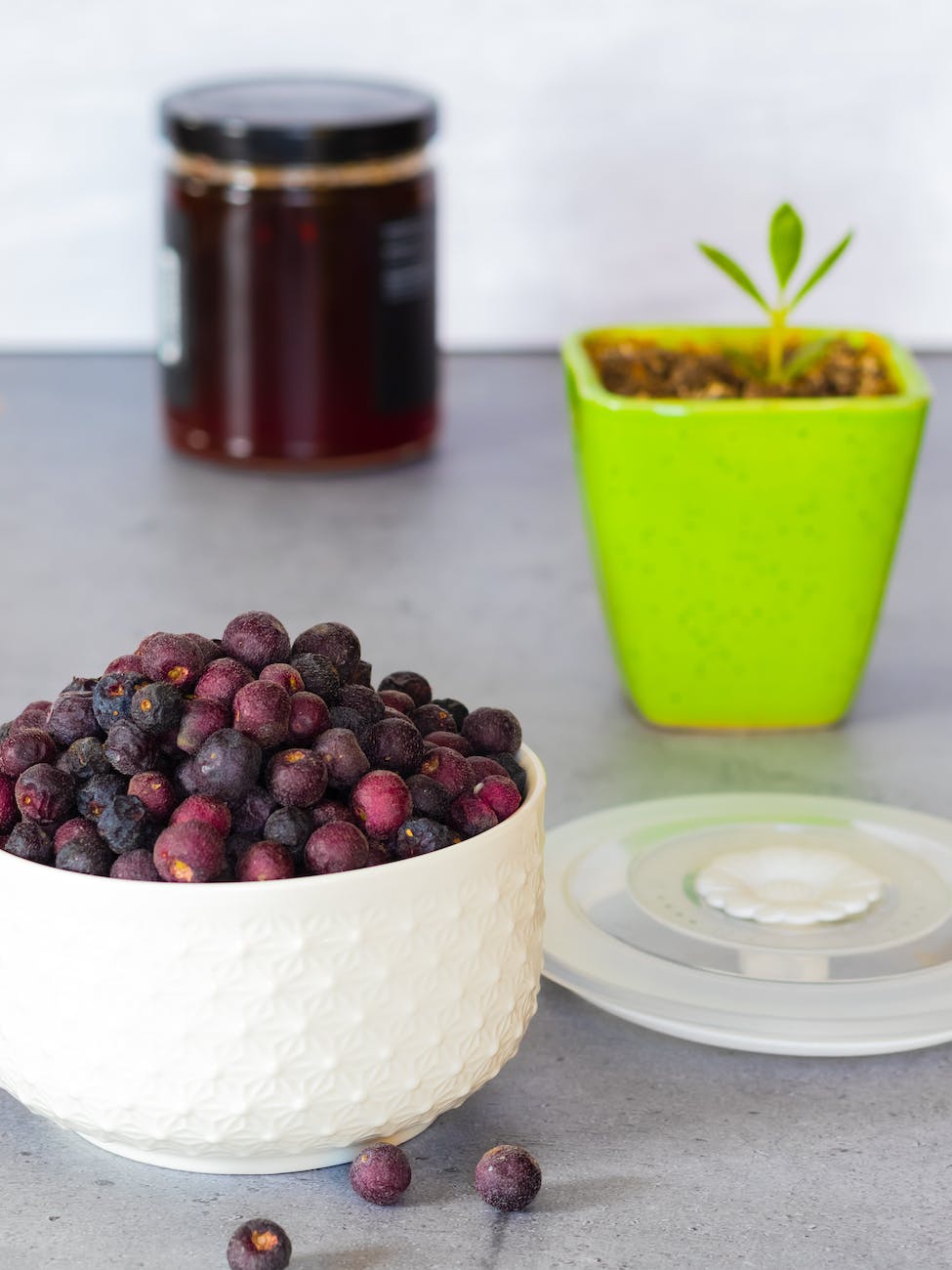
Unveiling India’s Hidden Superfood Gems: A Culinary Odyssey of Nutrition and Flavor
India, a melting pot of cultures, traditions, and flavors, is also a treasure trove of some of the world’s most nutritious and underrated superfoods. These native jewels, steeped in Ayurvedic wisdom and culinary heritage, offer a tantalizing array of health benefits. Join me on a journey to rediscover these hidden gems, as we bring to light the unsung heroes of the Indian diet, replete with their rich flavors and incredible health benefits.
Kaala Jamun (Indian Blackberry) – The Antioxidant Maestro
Forget about Goji Berries; India’s own Kaala Jamun is the real MVP. This dark, luscious fruit is not just a treat for your taste buds but also a powerhouse of health benefits. Known for its ability to control blood sugar levels, it’s a diabetic’s best friend. But that’s not all – its immune-boosting properties are just what you need to fend off those pesky seasonal bugs. Imagine a delicious, juicy berry that takes care of your health and satisfies your sweet cravings simultaneously!
Shatavari (Asparagus Racemosus) – The Hormonal Harmony Herb
In the ancient science of Ayurveda, Shatavari is a revered name. Known as a natural adaptogen, this herb is akin to a hormonal whisperer, bringing balance and peace to your body’s endocrine orchestra. Whether it’s menstrual woes, digestive disturbances, or just a case of the mood swings, Shatavari’s got your back. It’s like having a wise old healer in your kitchen cabinet.
Beet Greens – The Neglected Nutritional Powerhouse
In the hustle of modern life, we often overlook what’s right in front of us. Case in point: Beet Greens. These vibrant leaves, usually discarded in favor of their bulbous roots, are a revelation in nutritional terms. Packed with vitamins A and E, they’re a formidable substitute for the much-hyped Kale. Next time you’re about to toss these greens into the compost, pause and think of the burst of health you could be adding to your sauté pan instead.
Ashwagandha – The Stress-Buster Supreme
Meet Ashwagandha, the ancient herb that’s a stress-busting superstar. In today’s fast-paced world, it’s the antidote to our high-octane lifestyles. This herb doesn’t just help you relax; it strengthens your body from the inside, enhancing muscle growth and reducing blood sugar levels. It’s like having a personal zen master and fitness coach, all rolled into one.
Amaranth – The Ancient Grain with Modern Powers
Amaranth isn’t just another grain; it’s a legacy of ancient Indian agriculture. This gluten-free marvel is a nutritional dynamo – think of it as nature’s multivitamin. High in potassium, magnesium, and a host of other nutrients, it’s the perfect rice or wheat alternative for the health-conscious. Plus, its versatility in the kitchen means you’ll never get bored.
Star Fruit (Kamrakh) – The Star of Your Diet
Star Fruit, with its unique shape and tantalizing taste, is not just a feast for your eyes. This low-calorie, high-fiber fruit is a godsend for dieters and health enthusiasts alike. Packed with essential minerals, it’s the secret ingredient to a refreshed and rejuvenated you.
Drumsticks (Moringa) – The Miracle Tree’s Gift
The humble drumstick tree, found in many Indian backyards, is a veritable ‘Tree of Life.’ The drumsticks, rich in vitamins and minerals, are not just for making your sambhar tasty but are a natural energy booster. They’re like the Swiss Army knife of the nutrition world – versatile, powerful, and indispensable.
Journey with Jackfruit – The Jack of All Foods
Jackfruit, a giant in the fruit world, is the epitome of versatility. You can have it as a fruit, a nut, a vegetable, or even as a vegan meat substitute. Packed with nutrients, it helps in weight management, diabetes control, and cholesterol reduction. It’s like having a full-fledged health retreat in a single fruit.
Coconut – The Tropical Treasure
Ah, the coconut! This isn’t just a fruit; it’s a lifeline in tropical India. From the water that hydrates and replenishes electrolytes to the flesh that’s rich in fiber and healthy fats, the coconut is a symbol of wholesomeness. Whether in your curries or as a refreshing drink, it’s a taste of the tropics with a health kick.
Turmeric (Haldi) – The Golden Spice of Life
Turmeric, the golden-yellow spice, is not just a staple in Indian cooking but a staple in Indian healing.
Curcumin, the active compound in turmeric, is a celebrated warrior against inflammation and a guardian of good health. It’s like having a little bit of sunshine in your diet, brightening up your meals and your wellbeing.
Chickpeas – The Protein Powerhouse
Chickpeas, a staple in Indian cuisine, are much more than just an ingredient in your chana masala. These protein-packed legumes are a dream come true for vegetarians and health enthusiasts. They’re like the quiet, unassuming gym buffs of the legume world, strong and reliable.
Sprouts – The Nutrient Dynamo
Sprouts, the result of germinating seeds, are a powerhouse of nutrients. They’re a testament to the fact that great things often come in small packages. Adding them to your diet is like giving yourself a daily dose of health, packed with protein and amino acids.
Millets – The Ancient Super Grain
Millets, the unsung heroes of the grain world, are making a comeback. These gluten-free grains are not just about tradition but about health and sustainability. They’re like the versatile actors of the culinary world, fitting seamlessly into any role, be it upma, pulao, or porridge.
Spinach – The Leafy Green Powerhouse
Spinach is not just for Popeye. It’s a green powerhouse loaded with nutrients and antioxidants, fighting against all odds to keep you healthy. Including spinach in your diet is like deploying a team of bodyguards for your health.
Walnuts – The Brain Booster
Walnuts, with their brain-like shape, are nature’s hint at their benefits. Rich in omega-3 fatty acids, they’re not just good for your brain but for your heart too. It’s like having a nutty little health guardian looking out for your wellbeing.
Gooseberry (Amla) – The Vitamin C Champion
The humble Amla, often overlooked, is a vitamin C dynamo. This small, tangy fruit is a warrior in fighting off colds and boosting immunity. Including Amla in your diet is like giving yourself a shield against diseases.
The Indian Superfood Philosophy
The beauty of these Indian superfoods lies not just in their health benefits but in their integration into our daily lives. They remind us that sometimes, the most potent sources of nutrition don’t come from far-off lands but are grown in our backyards and are part of our rich culinary heritage. Embracing these superfoods is not just about eating healthy; it’s about reconnecting with a culture that has always understood the value of nature’s bounty.
So, the next time you’re planning your meals, think of these Indian superfoods. They’re not just ingredients; they’re a legacy of health, flavor, and tradition, waiting to be rediscovered and savored in every bite.
10 FAQs About Indian Superfoods
- What are Indian superfoods? Indian superfoods are nutrient-rich foods native to India, known for their incredible health benefits. They are deeply rooted in Indian culinary traditions and Ayurvedic medicine.
- Why should I include Kaala Jamun in my diet? Kaala Jamun is high in antioxidants and great for controlling blood sugar levels, making it an excellent choice for diabetics and those seeking to boost their immune system.
- Can Shatavari help with hormonal balance? Yes, Shatavari is known for its ability to balance hormones, alleviate symptoms of PMS, and improve overall reproductive health.
- Are Beet Greens nutritious? Absolutely! Beet Greens are rich in vitamins A and E and are a fantastic, nutrient-dense alternative to more popular greens like kale.
- What are the health benefits of Ashwagandha? Ashwagandha is known for reducing stress and anxiety, boosting immunity, and improving muscle strength and blood sugar levels.
- Is Amaranth a good gluten-free option? Yes, Amaranth is an excellent gluten-free grain that’s rich in minerals and vitamins, making it a healthy alternative to traditional grains.
- How can Star Fruit benefit my diet? Star Fruit is low in calories and high in fiber, making it an excellent choice for weight management and boosting metabolism.
- What makes Drumsticks (Moringa) unique? Drumsticks are rich in vitamins, minerals, and antioxidants, making them an excellent choice for boosting energy and improving overall health.
- Can Jackfruit be used as a meat substitute? Yes, Jackfruit’s texture and nutritional profile make it a popular vegan alternative to meat, offering a variety of health benefits.
- Is Turmeric just a spice, or does it have health benefits? Turmeric, or Haldi, is not only a key ingredient in Indian cuisine but also has significant health benefits, including anti-inflammatory properties and improved brain function.
Blog Tags
Indian superfoods, nutrition, health benefits, Ayurveda, gluten-free options, vegan alternatives, antioxidant-rich foods, immune boosters, stress relief, holistic health












